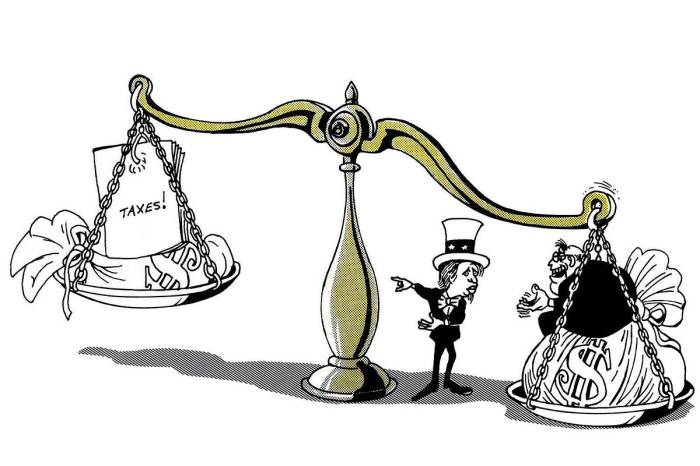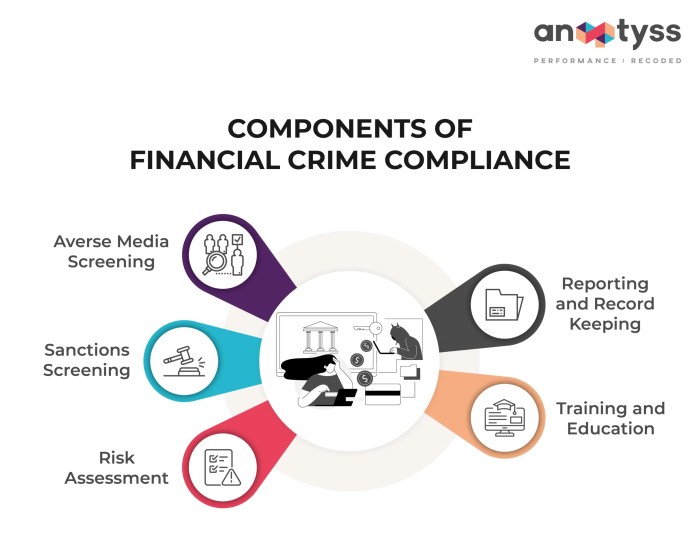The Relationship Between Accounting and Business Valuation sets the stage for a fascinating exploration of how financial data informs business worth. Accurate valuation relies heavily on reliable accounting practices, and understanding this interplay is crucial for investors, business owners, and financial professionals alike. This examination delves into the critical role of accounting data in various valuation methods, highlighting the challenges and opportunities inherent in this complex relationship.
We will explore how financial statements—income statements, balance sheets, and cash flow statements—provide the foundational data for valuation. The impact of accounting standards like GAAP and IFRS on the reliability of these inputs will be examined, along with common accounting issues that can affect valuation accuracy, such as intangible assets and off-balance sheet financing. Furthermore, we’ll analyze the use of accounting metrics and valuation multiples, demonstrating how changes in accounting standards or policies can significantly impact a company’s valuation.
The Role of Accounting Data in Business Valuation

Accurate and reliable accounting data forms the bedrock of any credible business valuation. The process relies heavily on the information presented in a company’s financial statements, which are then analyzed and adjusted to arrive at a fair market value. The use of standardized accounting principles ensures consistency and comparability across different businesses, facilitating a more robust and objective valuation.
Financial Statement Analysis in Valuation
Financial statements – the income statement, balance sheet, and cash flow statement – provide the raw material for business valuation. The income statement reveals a company’s profitability over a period, highlighting revenue, expenses, and net income. The balance sheet presents a snapshot of a company’s assets, liabilities, and equity at a specific point in time. Finally, the cash flow statement tracks the movement of cash both into and out of the business, offering insights into liquidity and operational efficiency. Valuation methods utilize data from these statements in different ways; for instance, discounted cash flow (DCF) analysis heavily relies on the cash flow statement’s projections, while asset-based valuations primarily utilize balance sheet data. Analysts scrutinize these statements for trends, anomalies, and inconsistencies that might affect the valuation.
The Importance of Accounting Standards
The application of consistent accounting standards, such as Generally Accepted Accounting Principles (GAAP) in the United States or International Financial Reporting Standards (IFRS) internationally, is crucial for the reliability of valuation inputs. These standards ensure that financial statements are prepared using a common set of rules and principles, making them comparable across different companies and jurisdictions. Without standardized accounting practices, the valuation process would be significantly hampered by inconsistencies and a lack of transparency, leading to unreliable valuations. Adherence to these standards increases the confidence of investors and other stakeholders in the valuation process.
Accounting Adjustments for Valuation Purposes
Often, the financial statements prepared for general reporting purposes require adjustments before they can be used in a business valuation. These adjustments are made to ensure the financial data accurately reflects the economic reality of the business being valued. For example, non-recurring items like extraordinary gains or losses might be excluded to provide a clearer picture of the company’s ongoing profitability. Similarly, adjustments might be made to reflect fair market values of assets, especially if book values are significantly different. Another common adjustment involves normalizing working capital to account for seasonal fluctuations or unusual levels of inventory. These adjustments are crucial for obtaining a more accurate and realistic valuation.
Valuation Methods and Their Reliance on Accounting Data
| Valuation Method | Primary Data Source | Secondary Data Source | Accounting Adjustments Often Required |
|---|---|---|---|
| Discounted Cash Flow (DCF) | Cash Flow Statement (Projections) | Income Statement, Balance Sheet | Normalization of working capital, adjustments for non-recurring items |
| Asset-Based Valuation | Balance Sheet (Assets) | Market data on similar assets | Fair value adjustments for assets, identification of intangible assets |
| Market-Based Valuation | Market data on comparable companies | Financial statements of comparable companies | Adjustments for differences in size, profitability, and growth |
| Income Approach (e.g., multiples) | Income Statement (Earnings) | Market data on comparable companies | Normalization of earnings, adjustments for non-recurring items |
Identifying and Addressing Accounting-Related Valuation Challenges
Accurate business valuation hinges on reliable and consistent accounting data. However, several accounting complexities can significantly impact valuation accuracy, leading to discrepancies and potentially flawed decisions. Understanding these challenges and employing appropriate mitigation strategies is crucial for generating credible valuations.
Accounting inconsistencies and estimations inherent in the preparation of financial statements introduce uncertainty into the valuation process. The impact of these factors can be substantial, particularly when dealing with complex business structures or rapidly evolving industries. A thorough understanding of the accounting methodologies employed is therefore paramount.
Intangible Assets and Their Valuation
Intangible assets, such as patents, trademarks, and goodwill, represent a significant portion of many companies’ value, yet their accounting treatment is often subjective and complex. The choice of amortization method, useful life estimation, and impairment testing can dramatically affect the reported value of these assets, directly influencing the overall business valuation. For instance, differing amortization methods for a patent could result in a substantial difference in the net asset value, thereby impacting the final valuation. A conservative approach might use a shorter useful life, leading to higher amortization expense and a lower valuation, while a more optimistic approach might lead to a higher valuation.
Deferred Revenue and its Impact on Valuation
Deferred revenue, representing payments received for goods or services not yet delivered, needs careful consideration in valuation. The timing of revenue recognition significantly impacts the reported financial performance, and thus the valuation. A company might recognize revenue over time (as the service is performed) or at a point in time (upon delivery). This difference in accounting treatment can drastically alter a company’s reported profitability and, consequently, its valuation. For example, a software company might recognize revenue over a subscription period, while a construction company recognizes revenue upon project completion. These differing treatments will lead to different financial statements and ultimately different valuations.
Off-Balance Sheet Financing and its Implications
Off-balance sheet financing, where liabilities are structured to avoid being reported on the balance sheet, presents a significant challenge to valuation professionals. These hidden liabilities can significantly impact a company’s financial position and solvency, potentially leading to an overvaluation if not properly accounted for. Examples include operating leases treated as off-balance sheet financing which would have to be capitalized and presented as debt on the balance sheet, affecting the debt-to-equity ratio and therefore valuation. A thorough investigation of a company’s financing arrangements is essential to uncover such hidden liabilities.
The Significance of Accounting Policies and Estimations
The choice of accounting policies and the inherent estimations involved (e.g., useful life of assets, bad debt expense) can significantly impact a business’s reported financial performance and consequently its valuation. Consistent application of accounting standards is critical; however, even with consistency, the use of different estimations can result in widely different valuations. For example, two companies in the same industry might use different methods for estimating bad debt, leading to different reported profits and valuations, even if their underlying business performance is similar.
Examples of Differing Accounting Treatments and Valuation Outcomes
Consider two companies, both with similar revenue and operating income. Company A uses the straight-line method for depreciating its assets, while Company B uses the accelerated depreciation method. Due to the different depreciation methods, Company B will report lower net income in the early years of the asset’s life, leading to a potentially lower valuation compared to Company A, despite having similar underlying business performance. Similarly, differences in inventory valuation methods (FIFO vs. LIFO) can also lead to significant differences in reported profits and subsequent valuations.
Best Practices for Accountants Involved in Business Valuation
Accountants play a crucial role in ensuring accurate business valuations. Adherence to best practices is paramount:
- Thoroughly understand the business and its industry.
- Apply appropriate accounting standards consistently.
- Document all assumptions and estimations clearly.
- Perform sensitivity analysis to assess the impact of different assumptions on valuation results.
- Consider the qualitative factors influencing valuation, in addition to quantitative data.
- Maintain transparency and clear communication throughout the valuation process.
- Seek expert advice when dealing with complex accounting issues.
Accounting Metrics and Valuation Multiples
Accounting metrics play a crucial role in business valuation, providing the raw data for various valuation multiples. These multiples offer a quick, albeit sometimes oversimplified, way to assess a company’s worth relative to its financial performance and book value. Understanding the strengths and weaknesses of different multiples, and how accounting adjustments can impact them, is essential for accurate valuation.
Different valuation multiples utilize various accounting metrics to derive a company’s value. The choice of multiple depends heavily on the specific industry, company size, growth stage, and the availability of reliable accounting data. Each multiple offers a unique perspective, and using a combination often provides a more robust valuation.
Obtain direct knowledge about the efficiency of How to Improve Cash Flow with Better Accounting Practices through case studies.
Price-to-Earnings Ratio (P/E)
The Price-to-Earnings ratio is perhaps the most widely used valuation multiple. It represents the market price per share divided by the earnings per share (EPS). A higher P/E ratio generally suggests that investors are willing to pay more for each dollar of earnings, often indicating higher growth expectations or lower risk perception. However, P/E ratios can be significantly affected by accounting choices regarding earnings recognition, particularly in companies with volatile earnings or those using aggressive accounting practices. For instance, a company that understates expenses might artificially inflate its earnings and thus its P/E ratio. Furthermore, comparing P/E ratios across different industries can be misleading due to varying profit margins and growth rates. Finally, the P/E ratio is less meaningful for companies with negative earnings.
Price-to-Book Ratio (P/B)
The Price-to-Book ratio compares a company’s market capitalization to its book value of equity. Book value is the net asset value as reported on the balance sheet. A P/B ratio above 1 suggests that the market values the company’s assets at more than their book value, possibly reflecting intangible assets or future growth potential. Conversely, a P/B ratio below 1 might signal undervaluation or potential problems with the company’s assets. However, the P/B ratio is sensitive to accounting methods used for asset valuation (e.g., depreciation methods) and can be less relevant for companies with significant intangible assets, which are often not fully reflected in book value. For example, a technology company with substantial intellectual property might have a high market value but a low book value, leading to a high P/B ratio.
Enterprise Value/EBITDA (EV/EBITDA)
The Enterprise Value to Earnings Before Interest, Taxes, Depreciation, and Amortization (EBITDA) ratio is a frequently used multiple for valuing entire businesses, including debt. Enterprise value (EV) represents the total value of the company, including equity and debt, less cash and cash equivalents. EBITDA is a measure of operating profitability that excludes the effects of financing and accounting choices related to depreciation and amortization. EV/EBITDA is often preferred over P/E because it’s less sensitive to capital structure differences and accounting treatments of depreciation. However, EBITDA doesn’t account for capital expenditures, which can be significant in capital-intensive industries. Therefore, while useful for initial screening, it should be supplemented by other analyses. A high EV/EBITDA ratio might suggest a company is overvalued, while a low ratio might indicate undervaluation.
Selection of Appropriate Accounting Metrics
The selection of appropriate accounting metrics depends on the specific valuation approach and the nature of the business. For example, discounted cash flow (DCF) analysis requires detailed cash flow projections, while relative valuation methods rely on comparable company data and the choice of suitable multiples. For companies with stable earnings and straightforward capital structures, P/E might be suitable. For capital-intensive businesses, EV/EBITDA might be more appropriate. For companies with significant tangible assets, P/B could be considered. Ultimately, a combination of multiples and a thorough understanding of the underlying accounting data is crucial for a robust valuation.
Common Valuation Multiples
| Multiple | Formula | Interpretation | Sensitivity to Accounting Adjustments |
|---|---|---|---|
| Price-to-Earnings (P/E) | Market Price per Share / Earnings per Share | Higher values suggest higher growth expectations or lower risk. | Highly sensitive; affected by earnings management and accounting choices. |
| Price-to-Book (P/B) | Market Capitalization / Book Value of Equity | Values above 1 suggest market value exceeds book value; values below 1 may indicate undervaluation. | Sensitive to asset valuation methods and intangible asset recognition. |
| Enterprise Value/EBITDA (EV/EBITDA) | (Market Cap + Debt – Cash) / EBITDA | A measure of a company’s overall value relative to its operating profit. | Less sensitive to capital structure and depreciation methods than P/E. |
| Price-to-Sales (P/S) | Market Capitalization / Revenue | Useful for companies with negative earnings or volatile profits. | Sensitive to revenue recognition policies. |
The Impact of Accounting Changes on Valuation
Accounting changes, whether stemming from revised accounting standards or alterations in a company’s internal accounting policies, can significantly influence a company’s perceived value. These changes can affect key financial metrics used in valuation models, leading to substantial variations in estimated worth. Understanding the implications of such changes is crucial for both investors and business owners.
Changes in accounting standards, often mandated by regulatory bodies like the Financial Accounting Standards Board (FASB) in the US or the International Accounting Standards Board (IASB) internationally, can reshape how companies report their financial performance. For example, the adoption of a new revenue recognition standard might necessitate a shift in how a company accounts for long-term contracts, directly impacting its reported revenue and profitability in the short term. Similarly, changes to lease accounting can dramatically alter a company’s balance sheet, affecting its debt-to-equity ratio and other leverage metrics frequently used in valuation. Internal policy changes, such as switching depreciation methods, can also significantly affect reported earnings and consequently, valuation.
Examples of Accounting Changes Affecting Valuation
The adoption of International Financial Reporting Standards (IFRS) 15, Revenue from Contracts with Customers, provides a clear example. Prior to its implementation, companies used a variety of revenue recognition methods, leading to inconsistencies in financial reporting. IFRS 15 introduced a more standardized approach, requiring companies to recognize revenue when control of goods or services transfers to the customer. This shift resulted in some companies reporting lower revenue in the short term, impacting their market capitalization and valuation multiples. Conversely, other companies saw an increase in reported revenue as they adjusted to the new standard. The change itself didn’t alter the underlying business operations, but it significantly altered the reported financial performance, and consequently the valuation. Another example is the change in lease accounting standards (IFRS 16 and ASC 842). Previously, operating leases were often off-balance sheet, resulting in lower reported debt levels. The new standards require most leases to be capitalized, increasing reported liabilities and potentially affecting credit ratings and valuation multiples.
Analyzing the Impact of Proposed Accounting Changes
Analyzing the impact of a proposed accounting change on valuation involves a multi-step process. First, a thorough understanding of the proposed change and its implications for the company’s financial statements is essential. This requires carefully reviewing the new accounting standard or the rationale behind the internal policy change. Next, the quantitative impact on key financial metrics needs to be assessed. This often involves recalculating key ratios and metrics, such as earnings per share (EPS), return on equity (ROE), and debt-to-equity ratio, under both the old and new accounting methods. Finally, the impact on valuation multiples, such as the price-to-earnings ratio (P/E) or enterprise value-to-EBITDA (EV/EBITDA), needs to be determined. This might require using different valuation models, such as discounted cash flow (DCF) analysis, to assess the impact of the accounting change on the company’s intrinsic value. Sensitivity analysis can further illuminate the range of potential valuation outcomes under different assumptions about the accounting change’s effects.
Hypothetical Scenario: Depreciation Method Change
Let’s consider a hypothetical manufacturing company, “Acme Widgets,” that currently uses the straight-line depreciation method for its machinery. Acme Widgets’ machinery has a book value of $10 million and a remaining useful life of 5 years. Under the straight-line method, annual depreciation expense is $2 million. Now suppose Acme Widgets decides to switch to the accelerated depreciation method, specifically the double-declining balance method. In the first year, depreciation expense would be significantly higher, potentially reaching $4 million (double the straight-line rate). This increased depreciation expense would lower reported net income and, consequently, the company’s earnings per share (EPS). A lower EPS would likely result in a lower P/E ratio, potentially reducing the company’s market capitalization and valuation. However, it’s crucial to note that while the reported net income is lower, the underlying cash flows might not be affected as significantly. The accelerated depreciation method simply accelerates the recognition of the expense over time. A sophisticated valuation analysis would consider the impact on both reported earnings and cash flows, providing a more comprehensive assessment of the change’s overall impact on Acme Widget’s valuation. A DCF analysis, for instance, would focus on the cash flow implications, potentially mitigating the impact of the accounting change on the final valuation.
Accounting for Intangible Assets in Valuation
Intangible assets, unlike tangible assets like property, plant, and equipment, lack physical substance. Their valuation presents unique challenges in business valuation because their value is often derived from future economic benefits, which are inherently uncertain. Accurately accounting for and valuing these assets is crucial for a realistic and comprehensive business valuation.
The inherent difficulty in valuing intangible assets stems from their non-physical nature and the complexities involved in quantifying their contribution to a company’s future cash flows. Traditional accounting methods often underrepresent their true economic value, leading to discrepancies between book value and market value. This discrepancy necessitates the use of specialized valuation techniques that go beyond standard accounting practices.
Challenges in Accounting for and Valuing Intangible Assets
The accounting for intangible assets is fraught with challenges. For instance, brand equity, while undeniably valuable, is difficult to quantify objectively. Similarly, intellectual property, encompassing patents, copyrights, and trademarks, requires careful consideration of factors such as the remaining patent life, the potential for future licensing revenues, and the likelihood of successful infringement lawsuits. Furthermore, the accounting standards themselves can vary across jurisdictions, leading to inconsistencies in how these assets are reported and valued. The lack of a readily available market for many intangible assets also complicates their valuation, making reliance on comparable transactions or income approaches particularly important. Another significant challenge lies in determining the useful life of an intangible asset, which directly impacts its amortization expense and ultimately its value.
Methods for Valuing Intangible Assets
Several methods exist for valuing intangible assets, each with its strengths and weaknesses. The most common approaches include the market approach, the income approach, and the cost approach. The market approach involves comparing the asset to similar assets that have recently been sold. This method relies on the availability of comparable transactions and requires careful consideration of any differences between the subject asset and the comparables. The income approach estimates the value of the intangible asset based on its expected future cash flows, typically using a discounted cash flow (DCF) analysis. This method requires forecasting future revenues and expenses attributable to the asset, as well as selecting an appropriate discount rate. The cost approach estimates the value of the intangible asset based on the cost of replacing or recreating it. This method is particularly useful for assets that are easily replicated, such as software or databases.
Examples of Intangible Assets’ Impact on Valuation
Consider a technology company with a strong patent portfolio. The value of these patents, representing intellectual property, significantly influences the overall business valuation. A pharmaceutical company with a well-established brand name will see a much higher valuation than a generic drug manufacturer due to the significant brand equity associated with its products. Similarly, a successful social media platform derives a substantial portion of its value from its user base and network effects, both intangible assets that contribute significantly to its future revenue generation potential. These examples highlight the crucial role intangible assets play in determining a company’s overall worth.
Incorporating Intangible Asset Valuation into a DCF Model
Incorporating intangible assets into a discounted cash flow (DCF) model requires a careful and systematic approach. First, identify all relevant intangible assets and estimate their future contribution to the company’s cash flows. This often involves projecting future revenues and expenses attributable to each asset. Next, select an appropriate discount rate that reflects the risk associated with the future cash flows. Finally, discount the projected future cash flows back to their present value, summing the present values to arrive at the total value of the intangible assets. This value is then added to the value of the tangible assets to arrive at the overall enterprise value. The choice of discount rate is critical and should reflect the risk associated with the specific intangible asset and the overall business. Sensitivity analysis can be used to assess the impact of different discount rates on the valuation.
Illustrating the Interplay Between Accounting and Valuation Methods
Accounting data forms the bedrock of most business valuation exercises. The accuracy and completeness of this data directly influence the reliability and credibility of the resulting valuation. Understanding how different valuation methods utilize accounting information is crucial for producing robust and defensible valuations.
The interplay between accounting and valuation methods is multifaceted, with accounting data feeding into various valuation approaches. This interaction ensures a consistent and reliable valuation process, minimizing the risk of significant discrepancies between the accounting representation of the business and its market value. The following sections detail this interplay.
Accounting Information Flow in Valuation Models
A visual representation, in the form of a flowchart, effectively illustrates how accounting information flows into different valuation models. Imagine a flowchart with three main branches emanating from a central box labeled “Accounting Data (Financial Statements, Tax Returns, etc.)”. The first branch leads to a box labeled “Discounted Cash Flow (DCF) Model,” the second to “Market Approach,” and the third to “Asset-Based Approach.” Each of these boxes then further branches out to show the specific accounting data elements used within each approach. For instance, the DCF branch would include sub-branches for “Revenue,” “Expenses,” “Capital Expenditures,” and “Working Capital,” all derived from the financial statements. The Market Approach would utilize data on comparable companies’ Price-to-Earnings ratios (P/E), which are derived from their reported earnings (accounting data). Finally, the Asset-Based Approach would utilize data on the book value of assets, obtained from the balance sheet. This flowchart visually demonstrates the essential role of accounting information in each valuation method.
Using Accounting Data in a Discounted Cash Flow (DCF) Model
The DCF model is a widely used valuation method that heavily relies on accounting data. The process involves several key steps:
1. Projecting Future Free Cash Flows (FCF): This step requires analyzing historical financial statements to identify trends in revenue, expenses, and capital expenditures. These trends inform projections of future cash flows. For example, historical revenue growth rates can be used to project future revenue, and past capital expenditure patterns can be used to predict future investment needs. Accounting data provides the baseline for these projections.
2. Determining the Discount Rate: The discount rate, often the Weighted Average Cost of Capital (WACC), reflects the risk associated with the investment. This calculation frequently uses data from the balance sheet (for debt and equity components) and accounting-derived metrics (such as beta for equity).
3. Calculating the Terminal Value: The terminal value represents the value of the business beyond the explicit forecast period. Common methods for calculating terminal value utilize accounting data such as projected free cash flow growth rates and the company’s weighted average cost of capital.
4. Discounting Cash Flows and Terminal Value: The projected free cash flows and the terminal value are discounted back to their present value using the discount rate. This process aggregates all future cash flows to a single present value, representing the business’s intrinsic value.
5. Summing Present Values: The present values of the projected free cash flows and the terminal value are summed to arrive at the final DCF valuation.
Hypothetical Case Study: Accounting Data and Valuation, The Relationship Between Accounting and Business Valuation
Let’s consider “Alpha Corp,” a hypothetical manufacturing company. Alpha Corp’s financial statements reveal consistent revenue growth of 10% annually over the past five years, with a stable net profit margin of 15%. Their balance sheet shows a healthy debt-to-equity ratio of 0.5. Using this accounting data, a DCF valuation can be performed. We project free cash flows for the next five years, assuming a continuation of the 10% revenue growth and a 15% profit margin. We then estimate a terminal value based on a perpetuity growth rate of 3% and a WACC of 10% (calculated using the debt-to-equity ratio and market risk premium). Discounting the projected free cash flows and the terminal value at the 10% WACC, we arrive at a valuation of $100 million. If, however, Alpha Corp’s accounting practices were to suddenly change, for example, adopting a more aggressive depreciation method, this would impact the reported profits and consequently alter the projected free cash flows, leading to a different valuation. A more aggressive depreciation method would lower reported profits in the short term, resulting in a lower valuation under the DCF method, even if the underlying economic reality of the business remains unchanged. This illustrates the crucial link between accounting methods and the final valuation.
Final Review: The Relationship Between Accounting And Business Valuation
In conclusion, the relationship between accounting and business valuation is inextricably linked. Accurate and reliable accounting data forms the bedrock of any sound valuation, influencing the selection of appropriate methods and significantly impacting the final result. Understanding the nuances of accounting standards, potential challenges, and the application of various valuation multiples is paramount for making informed financial decisions. By appreciating this intricate interplay, stakeholders can gain a clearer picture of a business’s true worth and navigate the complexities of the financial landscape with greater confidence.
Question & Answer Hub
What are some common errors in accounting that affect business valuation?
Common errors include misclassifying assets, improperly recognizing revenue, and inconsistent application of accounting principles. These can lead to inaccurate financial statements and skewed valuation results.
How does industry context affect the choice of valuation multiples?
Different industries have different norms and benchmarks. A multiple appropriate for a technology company might be unsuitable for a manufacturing firm due to varying growth rates, capital intensity, and profitability levels.
Can you explain the difference between GAAP and IFRS?
GAAP (Generally Accepted Accounting Principles) is primarily used in the United States, while IFRS (International Financial Reporting Standards) is used internationally. They have similarities but also key differences in accounting treatments for certain items, impacting valuation.
What is the significance of a discounted cash flow (DCF) analysis in business valuation?
DCF is a widely used method that projects future cash flows and discounts them back to their present value, providing an intrinsic valuation based on the company’s expected future earnings.






